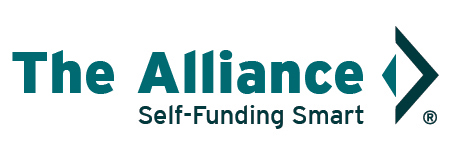Benefit Programs: The Right Partners Can Make all the Difference
By: Mike Roche, Director of Business Development A robust, high-quality health benefit program can give employers an edge in todayís competitive hiring market. Beyond attracting and retaining top talent, it's the foundation of what helps employees, and their families stay healthy and productive.
A robust, high-quality health benefit program can give employers an edge in todayís competitive hiring market. Beyond attracting and retaining top talent, it's the foundation of what helps employees, and their families stay healthy and productive.
But a well-designed health plan is just the beginning; you cannot create and maintain a holistic benefit program alone. You need the right partners to support your employees in all areas of their health and wellness.
Who are Benefit Partners?
Benefit partners are vendors that provide a service which allows you to facilitate your benefit program. A few examples of benefit partners include brokers, third party administrators (TPAs), pharmacy benefit managers (PBMs), networks, independent primary care, and care navigation providers.
What to Look for in a Benefit Partner
Choosing the right partner is essential to the success of your benefit program so itís important to be proactive in your search. Because self-funded employers have a fiduciary responsibility to their employees, itís crucial to seek a benefit partner that offers high-value services at affordable costs.
An effective benefit partner will offer a range of customized options tailored to their clientsí needs. Make sure your potential partner takes a holistic approach, thinking not only about what is happening today and how to handle it, but also proactively thinking about what issues could arise in the future and how they will be managed.
The right benefit partner will be accessible and communicate clearly and consistently. They will be transparent about their compensation and provide access to your claims data so you can make the best decisions for your employees and their families. A supportive partner will also help you develop a plan to communicate effectively with your employees about their benefits.
What to Watch Out for in a Benefit Partner
On the flip side, working with an unresponsive or unethical partner can be detrimental to your benefit program. Your benefit partner should always be working in your best interest and finding innovative ways to improve your benefit program. If your partner is offering one size fits all solutions, itís time to start looking for other options. You want to look for someone who is willing to challenge the status quo to move healthcare forward for employers and their employees.
Be wary if your benefit your partner is not communicating regularly and transparently. If you ask for your claims data and donít receive it, that is an issue. Benefit partners should provide independent market data to support benefit plan recommendations and be knowledgeable about industry trends and compliance requirements.
Top Considerations for Choosing a Benefit Partner
- Experience
- Qualifications
- Advocacy/wellness
- Support Ė who will service your account and to what extent
- Communication
- Compliance expertise
- Day-to-day administration
- Compensation
- Length of contract Ė how to get out of contract if needed
- Renewal process
The Alliance Can Improve your Benefit Program
The Alliance can help you put some of these strategies into practice. Using our Smarter NetworksSM, we help employers customize their benefit plan design to tailor benefits to their organizationsí specific needs. We use innovative contracting and payment strategies like bundles, direct primary care, steering and tiering and PBM solutions to help our employer-members and their employees manage their healthcare spend.
Reach out to learn how The Alliance can help you take your benefit program to the next level for your business and your employees.
Mike Roche is responsible for working with The Alliance employer-members on health benefit strategies; sharing data-based information to help members manage their healthcare spend.
†



 This post is locked to comments.
This post is locked to comments.
